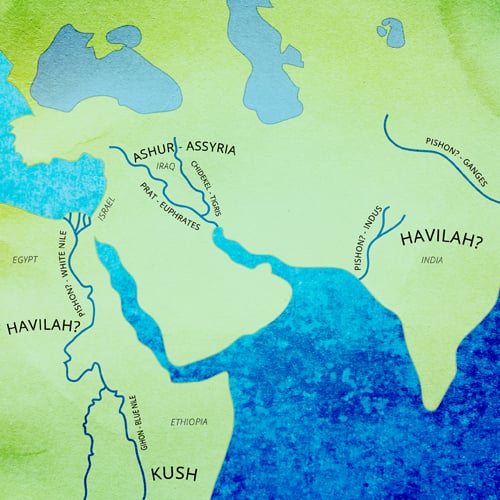
Title: The Role of Context in Scientific History: A Narrative Exploration of Mesopotamia
Identifying as a narrative historian of science, I perceive myself not merely as a recorder of events but as a storyteller dedicated to animating the past. Crucially, I aim to underscore the diverse elements—geography, governance, economy, culture, belief systems, and environmental circumstances—that intertwine to create the intricate fabric of scientific advancement. Science does not evolve in a vacuum; it develops in response to the needs, limitations, and curiosities of the larger human experience.
This focus on context directly contrasts with presentism, a troublesome historiographical method that views the past through contemporary perspectives. One of the most enduring mistakes in historical narratives involves isolating scientific concepts from their original settings merely because they appear to parallel or enhance modern science. This skews understanding and misrepresents the genuine trajectory of intellectual development.
Astrology and the Birth of Astronomy: An Illustrative Instance of Contextual Interplay
Astrology serves as a fascinating instance that exemplifies the impact of context. Frequently dismissed by contemporary academics as mere pseudoscience or superstition, astrology was historically intertwined with astronomy for centuries. Indeed, throughout the Greco-Roman era—and carrying on into the Renaissance—astronomy and astrology were perceived as two aspects of a singular, cohesive discipline.
The renowned Ptolemy (Ptolemaeus), whose astronomical writings shaped centuries of European scientific thought, also authored significant astrological works. Analyzing the history of astronomy in isolation from astrology would overlook essential developmental milestones. It is precisely within the realms of divination, calendar creation, and celestial foresight that early astronomy achieved remarkable advancements, particularly in predictive models and intricate computational techniques.
Renaissance Nürnberg: An Examination of Economic Influencers in Science
A case study that resonates with me is Renaissance Nürnberg, which flourished as a center for mathematical sciences—not due to an intrinsic thirst for knowledge or an advancing scientific community, but because of economic necessities. As a prospering trade hub in early modern Europe, Nürnberg increasingly required advanced tools for navigation, surveying, and time measurement.
These practical requirements spurred technical innovation and drew in mathematicians, instrument makers, and traders. Here again, we observe how economic context—not merely intellectual ambition—can propel scientific progress. Concentrating solely on equations or theoretical outcomes without recognizing the socio-economic drivers behind them would make any historical evaluation incomplete.
The Fertile Crescent: Cradle of Civilizations—Or Just One of Many?
Mesopotamia, situated between the Tigris and Euphrates rivers, is often referred to as “The Cradle of Civilization.” While this title acknowledges the region’s remarkable contributions to human progress—including the invention of writing and the emergence of science—it risks overlooking similar developments in the Indus Valley and ancient China. All three of these early river civilizations—each nourished by vast, life-giving rivers—made significant advances in governance, agriculture, and astronomy.
Viewing Mesopotamia in isolation, raised above others, reflects a Eurocentric bias that simplifies the complex, polycentric foundations of human knowledge. Nonetheless, Mesopotamia’s accomplishments remain remarkable. The primitive writing system of cuneiform, the sexagesimal (base-60) numeral system, standardized timekeeping, and records of celestial movements all affirm the region’s foundational significance in the formation of ancient science.
“Between Two Rivers”: A Narrative Voyage through Ancient Mesopotamia
To enrich my comprehension of the emergence of science within a contextual Mesopotamian framework, I recently explored Moudhy Al-Rashid’s new work Between Two Rivers: Ancient Mesopotamia and the Birth of History (Hodder Press, 2025). In a landscape of dry academic literature, this book stands out as both intellectually rigorous and notably accessible.
Rather than striving for a detailed, chronological narrative of the region’s intricate 3,000+ year history—a feat that would necessitate a vast library—Al-Rashid adopts a thematic, narrative approach. Each chapter is anchored in tangible artifacts like an inscribed clay drum, a building brick, or a statue of a monarch before diving into rich contextual investigations of writing, kingship, education, architecture, and science.
The Museum That Wasn’t: An Archaeological Narrative Device
Al-Rashid begins her exploration with a poignant story: a chamber unearthed by archaeologist Leonard Woolley in the 1920s, filled with artifacts spanning multiple eras. Woolley referred to it as a “museum,” implying that Enigaldi-Nanna, a princess-priestess of Ur, curated these historical pieces. Al-Rashid uses this notion not to assert an absolute truth but as an engaging entry point for archaeological storytelling, inviting readers to understand Mesopotamia through artifacts that transcend centuries.
Inscribed Bricks and Printing During the Bronze Age
One of the standout chapters focuses on the unassuming clay brick, which is fundamental to Mes